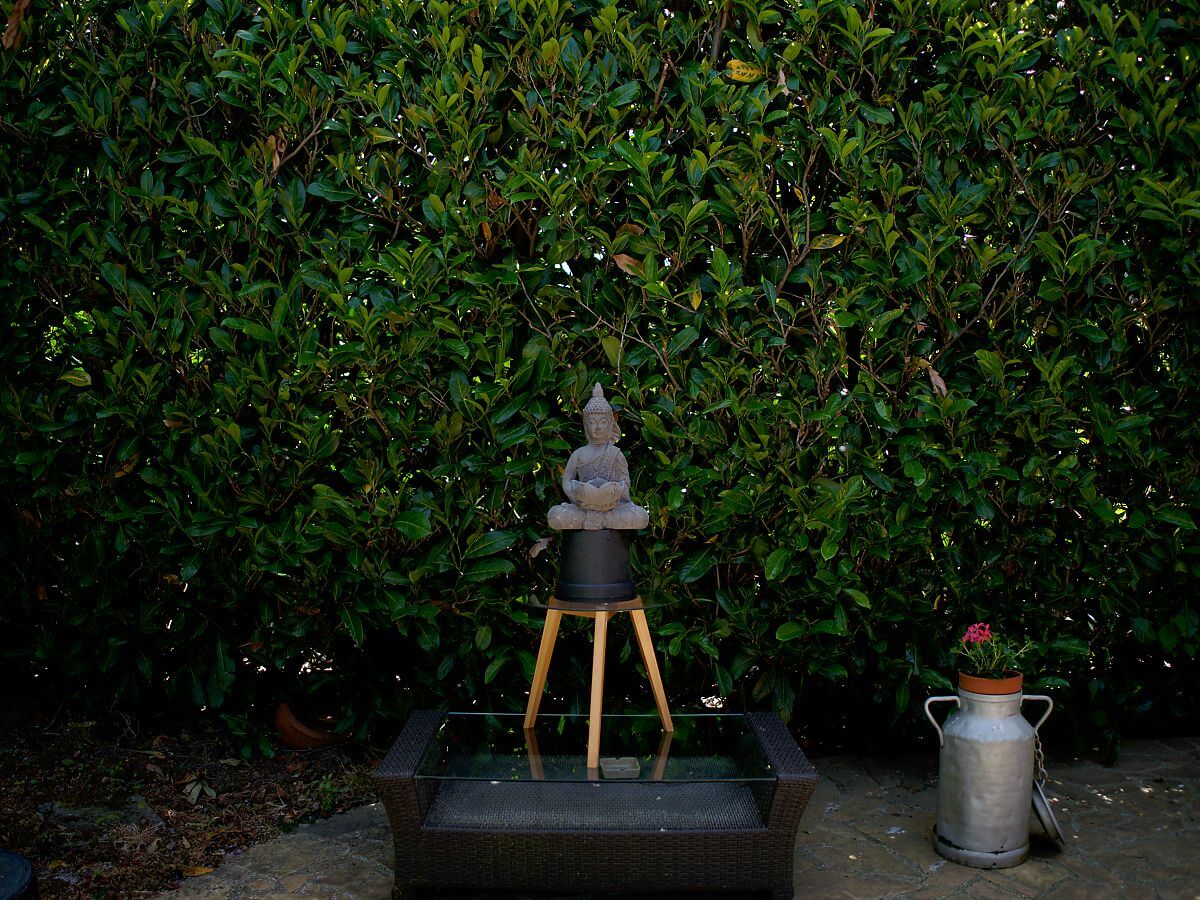Panasonic Leica Summilux 15mm f/1.7 review
Last update: 04/19/2024
Our blog continues to grow thanks to you, our readers. This blog may contain affiliate links, which means we can earn a small commission if you make a purchase through them, at no extra cost to you. This helps us to continue to bring you more and support our work!
At the end of 2013, Panasonic announced a new lens designed for their micro 4/3 cameras, in association with Leica: the Panasonic Leica DG Summilux 15mm f/1.7. Almost a wide angle lens, it is the only prime lens in the Summilux range that doesn’t offer an f/1.4 aperture. Although we have recently been releasing Sony E-mount reviews, I thought that it might be useful to review micro 4/3 mount lenses before selling them. Please note that this lens can be installed on both Panasonic and Olympus micro 4/3 bodies, as the micro 4/3 mount is shared by both brands, although some restrictions, mentioned later, make it less suitable for Olympus bodies. Here is our full page detailing all current Micro 4/3 cameras.
When I was using DLSR cameras, there was a big weight and size difference between that gear and the micro 4/3 gear. With the Sony A7 mirrorless cameras, the difference in weight and size of the cameras has been reduced, and now that it is easier to find very compact and light E-mount lenses, the micro 4/3 format is less attractive from my point of view, even if it remains interesting.
Here I’ll present a review of this Panasonic 15mm f/1.7 attached to a Panasonic G90, a 20MP mirrorless micro 4/3 camera, which is among the most recent micro 4/3 cameras. There will be few brick walls or curves, which only serve to illustrate optical defects. I’ll be providing a more ” field ” oriented review. In this regard, I have also just finished publishing a full review of the Panasonic G90.
The images displayed were shot in RAW format and developed in DxO Photolab 5, set to standard color rendering with optical defects corrections enabled, except to show these defects and in the gallery images.
Presentation of the lens
| Details | Visual |
|---|---|
|  |
Released at 600€, this is not what you would call an affordable lens, since it’s only a 30mm f/3.5 full frame equivalent (although the f/1.7 aperture is still valid for exposure). Especially since its price has not decreased much despite its 10 years old. For example, a “real” 35mm f/1.8 Samyang can be found in E-mount for 350€ (I know I bought myself one!).

Against this lens, we can look at the 17mm f/1.8 from Olympus and both the 14mm f/2.5 and the 20mm f/1.7 from Panasonic. The 14mm and 20mm Panasonic lenses were designed to be very light, and above all, very compact. They’re what we call “pancake” lenses, and they’re so compact that they can be confused with body caps. The Olympus 17mm is, in my opinion, the most direct comparison, for a lower price than the 15mm f/1.7.
This 15mm is quite special, designed for street photography, with some features not common in this format. Equivalent to a 30mm on a full frame sensor, it is a fairly standard focal length, close to 28 and 35mm, often preferred by street photographers. The maximum aperture is also quite large, but, on the other hand, it’s quite common on micro 4/3 lenses, as the size of the sensor allows larger apertures without increasing the diaphragm too much on this kind of focal length. The recent Panasonic and Olympus cameras generally benefit from stabilization on the sensor, and the combination of the two makes it possible to reduce the exposure time while avoiding movement blur, and to limit the ISO increase to get better image quality.
Ergonomics, design and handling
Panasonic’s association with Leica often leads to very nice lenses. This 15mm benefits from very good quality metal construction, more dense than plastic, but still managing to control the weight. Weighing only 115g, it will fit on any micro 4/3 body.

The lens features 3 aspherical lenses and a nano-coating to ensure a high level of detail. The 7-blade diaphragm obviously offers a very round bokeh at large apertures, but quickly becomes polygonal at medium apertures.
As with all Panasonic lenses made in association with Leica, it has an aperture ring. Be careful, however—it will not work if you attach the lens to an Olympus camera. You will have to change the aperture with the dial on the body, as with any other lens without a ring. The aperture ring is notched by 1/3 EV and is quite small, which is normal given the length of the lens, but it’s nice to use.

The focus ring is not very large either, but it is quite smooth, and you can turn it easily with a finger. There’s also an AF/MF switch on the side. The lens hood is also atypical, being rectangular and therefore can’t be flipped to reduce the space it takes up in your bag, but the cap can be placed on both the front of the lens and the lens hood, which is quite convenient. The presence of a focus ring and an aperture ring on such a short lens is a challenge for the manufacturer, and also for the photographer. In fact, even without big fingers, it’s tricky to manipulate one without moving the other. I personally had to change the focus quite often while I was changing the aperture.
Autofocus
As a lens designed for reportage or street photography, Panasonic had to ensure that the autofocus had good reactivity and, especially, good discretion. The AF reacts very quickly and quietly. In AF-S mode, focusing is fast and accurate. It’s a real joy to walk along the street with this lens: we point, we focus and we shoot in less than a second!
In AF-C mode, things are a bit different, but the lens has little to do with it. Indeed, it still acquires the subject quickly and quietly, but starts pumping as soon as it has to follow it. This is due to Panasonic’s AF system, limited to contrast detection, which, although efficient for this technology, requires regular back and forth in front of and behind the subject. This doesn’t necessarily prevent it from hitting the right spot when you trigger the shutter, but makes its use very disturbing during shooting.
To summarize, if you want better AF tracking, this lens will work better on an Olympus camera with phase detection like the E-M5 III or the recent OM-1, but you’ll have to say goodbye to the option to change the aperture with the aperture ring. If you are not looking to follow a particular subject, you can attach it to any camera, and it will be very efficient.
Image quality
The quality is good, but the Leica grip may give us hope for better. Indeed, the center is a bit soft before f/2.8, and the edges even more, especially at the ends. It’s better to stop down to f/4 to get the greatest consistency. Diffraction starts to be perceived from f/8 and ruins the sharpness at f/11, and even more at f/16. Nevertheless, the overall image quality remains good enough in many cases. However, in order to get the most out of the 20MP of recent micro 4/3 cameras, it will be better to stay in a range between f/4 and f/5.6 in reportage conditions. In the case where the subject is really central, we can use a larger aperture, like f/2.8.
Here is a picture of my test scene below.

Here is a 100% crop of my test image in the center of the image at different apertures. You just have to move the mouse over the different apertures to change the image (it’s magic!).
Bokeh
The bokeh is not particularly soft, but you will have to be relatively close to the subject to get a pronounced blur and a shallow depth of field. In this case, however, it will be possible to highlight your subject against the background quite well.


At full aperture, it is still possible to get a relatively blurred background with this lens
Distortion
The distortion is very strong, so you’ll lose a lot of edges after correcting. Nevertheless, the overall image quality remains good enough in many cases.


Vignetting
The vignetting is notable at full aperture, as usual, and reduces at f/2 and even more at f/2.8. Thereafter, it remains the same, slight but still present even at f/8.
Chromatic aberrations
Chromatic aberrations are very slight, I noticed some purple fringe especially in the edges on white objects. Nothing crazy, since this can also be corrected in post-processing with any processing software like Lightroom or DXO Photolab that I use. Here is what little we can see (Crop 100%).

Flare
Flare is present when you shoot with the sun in front, but much less when it’s out of the scene. The lens hood does not change the results much.

Coma
For astrophotography, the coma is quite significant at full aperture, with stars elongating and egrets forming. Closing to f/2 improves things very slightly, but the improvement is more noticeable at f/2.8. Note that this lens isn’t made for this use.


Sunstars
Sunstars are well defined when stopped down to f/11. At larger apertures, even f/8, the rays are more diffuse.


Focus breathing
The focus breathing is very slight; you can see that the frame tightens, but it’s almost imperceptible and really not very annoying.
Alternatives to the Panasonic Leica DG Summilux 15mm f/1.7 ASPH
I have already mentioned them above, and honestly, I don’t know enough about the qualities of those other lenses mentioned to really give you a perfect opinion, but I will try to summarize the reviews I’ve read:
- The 17mm f/1.8 from Olympus, probably the biggest competitor, doesn’t seem to have higher quality or faster AF, but it costs less, with similar physical characteristics to the 15mm.
- The 17mm f/1.2 from Olympus is much higher end and delivers some of the best image quality. It’s the best you can get in micro 4/3 at the moment. It is, however, much more expensive, bigger and heavier.
- The 20mm f/1.7 Panasonic is more compact, lighter, cheaper and good quality for its features. However, it seems to have a much more erratic AF.
- There are also zooms covering the 15mm focal length. I won’t mention them all, but we find the 10-25mm f/1.7 and the 12-35mm f/2.8 from Panasonic, as well as the 12-40 f/2.8 and 12-45 f/4 from Olympus. All of these lenses are fairly high end and deliver very good image quality. If you’re looking for versatility and image quality, these zooms will all be excellent choices. It all comes down to size, weight and price, the 10-25 in particular being extremely expensive.
Overview of the Panasonic Leica Summilux 15mm f/1.7
| Advantages | Disadvantages |
|---|---|
|
|
Conclusion
In short, Panasonic and Leica have released a very nice lens. It’s quite versatile for many shots, well designed and pleasant to use. For 550€, you get a large maximum aperture and a very good AF, all in a quality barrel. We do, however, regret the price for a f/1.7 fixed focal length, knowing that the 17mm f/1.8 from Olympus, also well designed, costs 150€ less and offers more or less the same performance.
For even less, the 20mm f/1.7 from Panasonic will be even more discreet while offering good image quality, but it’ll offer you much less reactivity with a somewhat outdated AF. If you’re looking for a simple and practical lens, the 20mm will be a better choice. But if you like beautiful objects that say “I am a photographer,” this 15mm will be worth its price.
As mentioned many times now, if you liked our review, please feel free to use the links in the article (or below) when purchasing. This way, you support our work and allow the creation of other articles like this one. Of course, it won’t cost you anything extra.

I will see you soon for another micro 4/3 review—there’s more to come. If you are looking for lenses, don’t hesitate to look at our article about the best micro 4/3 lenses.
See you soon,

Written by Sylvain PONS
I've been passionate about photography since 2010, learning as I went along. Today, I dedicate myself to guiding others in their choice of camera gear and sharing a variety of tips to improve their photography skills.
Despite our care, a mistake may have slipped into this article. If you find any, please don't hesitate to let us know so we can correct it as soon as possible and keep our information up-to-date!









